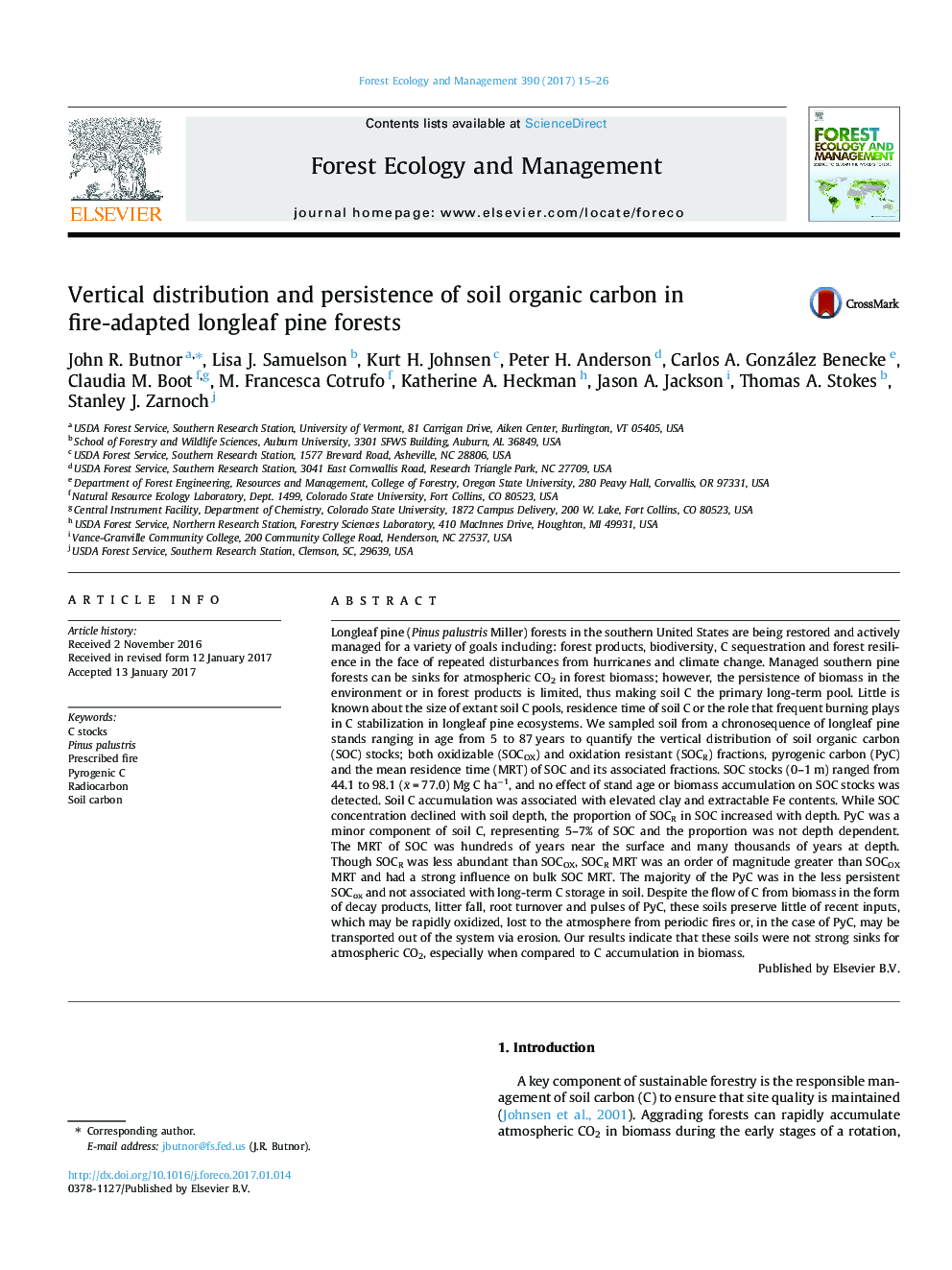| کد مقاله | کد نشریه | سال انتشار | مقاله انگلیسی | نسخه تمام متن |
|---|---|---|---|---|
| 6459503 | 1421368 | 2017 | 12 صفحه PDF | دانلود رایگان |
• Soil C stocks (0–1 m) in 14 Pinus palustris stands ranged from 44.1 to 98.1 Mg C ha−1.
• Residence time of soil C was hundreds of years at the surface, many thousands at depth.
• Pyrogenic C (PyC) from incomplete combustion comprised 5–7% of soil C stocks.
• PyC was in the least persistent fraction and not driving long-term C storage in soil.
• C accumulation was not related to stand age, but was associated with clay and Fe concentrations.
Longleaf pine (Pinus palustris Miller) forests in the southern United States are being restored and actively managed for a variety of goals including: forest products, biodiversity, C sequestration and forest resilience in the face of repeated disturbances from hurricanes and climate change. Managed southern pine forests can be sinks for atmospheric CO2 in forest biomass; however, the persistence of biomass in the environment or in forest products is limited, thus making soil C the primary long-term pool. Little is known about the size of extant soil C pools, residence time of soil C or the role that frequent burning plays in C stabilization in longleaf pine ecosystems. We sampled soil from a chronosequence of longleaf pine stands ranging in age from 5 to 87 years to quantify the vertical distribution of soil organic carbon (SOC) stocks; both oxidizable (SOCOX) and oxidation resistant (SOCR) fractions, pyrogenic carbon (PyC) and the mean residence time (MRT) of SOC and its associated fractions. SOC stocks (0–1 m) ranged from 44.1 to 98.1 (x¯ = 77.0) Mg C ha−1, and no effect of stand age or biomass accumulation on SOC stocks was detected. Soil C accumulation was associated with elevated clay and extractable Fe contents. While SOC concentration declined with soil depth, the proportion of SOCR in SOC increased with depth. PyC was a minor component of soil C, representing 5–7% of SOC and the proportion was not depth dependent. The MRT of SOC was hundreds of years near the surface and many thousands of years at depth. Though SOCR was less abundant than SOCOX, SOCR MRT was an order of magnitude greater than SOCOX MRT and had a strong influence on bulk SOC MRT. The majority of the PyC was in the less persistent SOCox and not associated with long-term C storage in soil. Despite the flow of C from biomass in the form of decay products, litter fall, root turnover and pulses of PyC, these soils preserve little of recent inputs, which may be rapidly oxidized, lost to the atmosphere from periodic fires or, in the case of PyC, may be transported out of the system via erosion. Our results indicate that these soils were not strong sinks for atmospheric CO2, especially when compared to C accumulation in biomass.
Journal: Forest Ecology and Management - Volume 390, 15 April 2017, Pages 15–26
